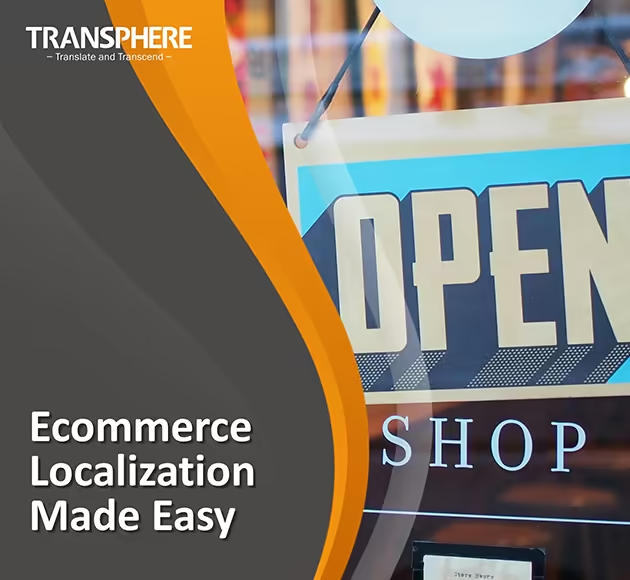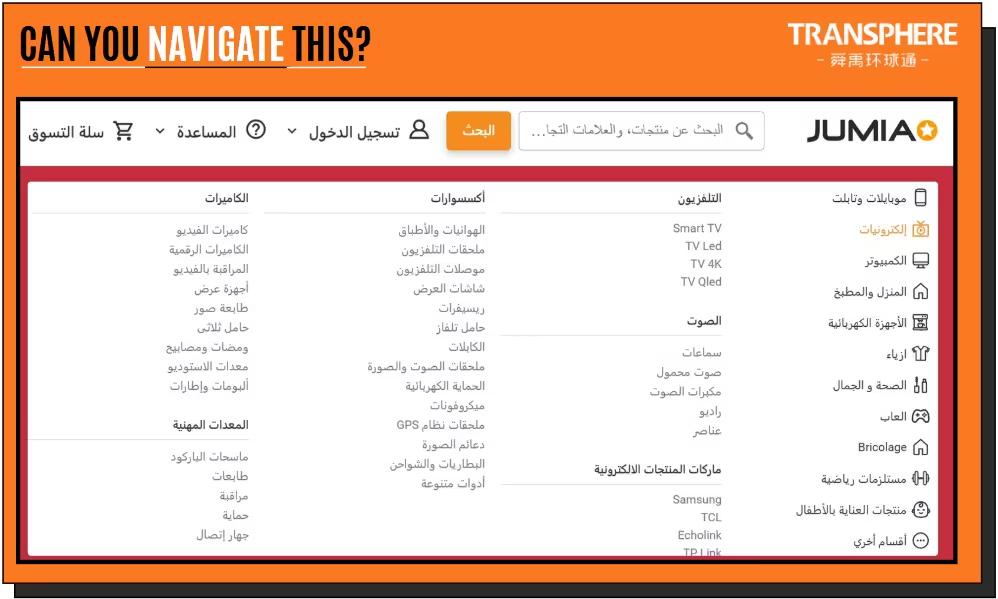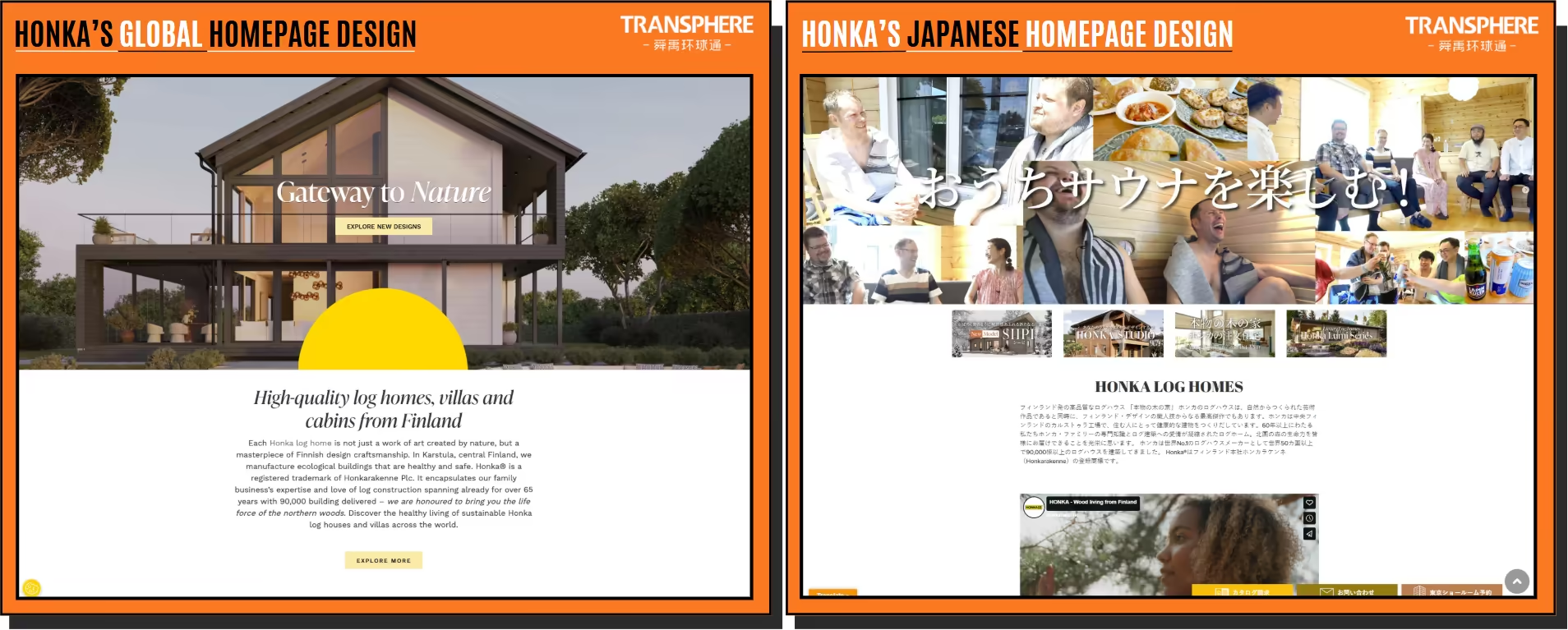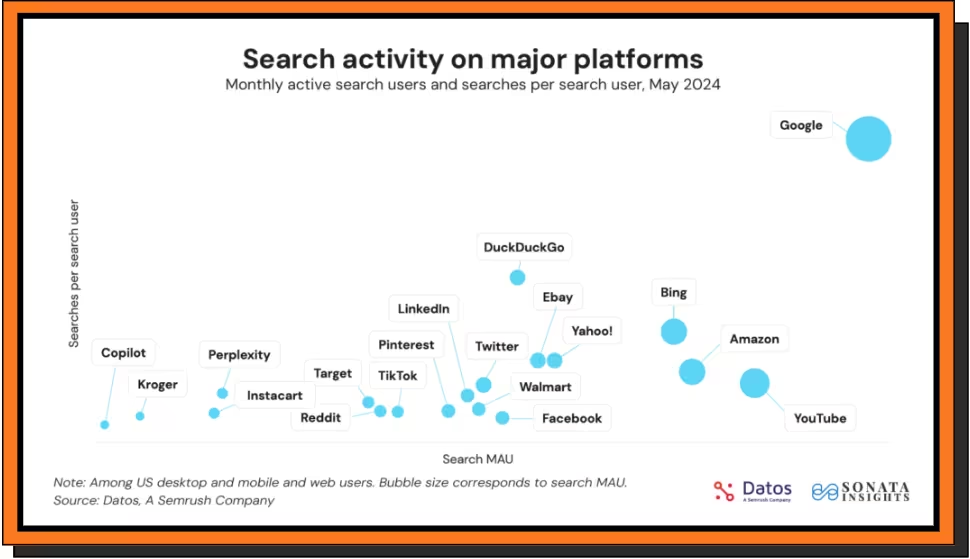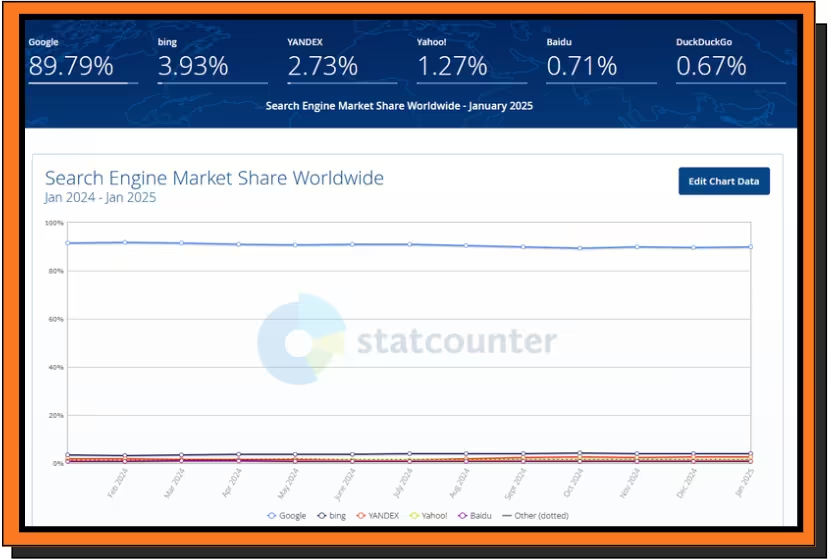Connecting with your global customers is essential to tapping into the rapidly growing $4.3 trillion ecommerce market. And it all starts with speaking your customers’ language.
Yet, language, due to its ubiquitous nature, is often undervalued. Like breathing, it’s so ingrained in how we operate that we rarely stop to think about it. That’s why ecommerce localization and translation often get overlooked.
This guide is here to change that. We’ll walk you through the role language plays in your growth and how to use it to your advantage by answering a few key questions:
- What is e-commerce localization, and how is it different from translation?
- What are the benefits, and is it worth the investment?
- When should you start thinking about a localization strategy?
- How do you implement it—and what does that process actually look like?
Let’s dive in.
What is ecommerce localization?
Ecommerce localization is the process of adapting your online store to meet the needs and preferences of a specific market. That includes everything from language and cultural references to layout, visuals, functionality, and even payment methods.
Ecommerce translation, on the other hand, focuses purely on converting text from one language to another.
For example, when Alibaba takes a product page and translates it from English to Spanish, that’s translation. The words change, but the design, layout, and user experience remain the same. English text becomes Spanish text—and that’s it.
Localization goes several steps further. Take 1688.com, Alibaba’s platform for the Chinese domestic market. It looks and feels completely different from Alibaba.com, which is designed for international buyers.
Why? Because it’s localized.
When Alibaba built these two platforms, they had to dig deep into each market’s behavior and expectations. That meant answering questions like:
- How do American users browse compared to Chinese users?
- Where do people’s eyes typically land on a page?
- Do they scan vertically or horizontally?
- Do they read right to left or left to right?
- Do they prefer a minimalist layout or something more information-dense?
- What color palettes resonate with them?
- What kind of features do they expect?
- Which payment methods are they comfortable with?
These are just a few of the questions that fall under the umbrella of localization. In short: Translation changes the language. Localization changes the experience.
What are the benefits of ecommerce localization?
Localized ecommerce platforms gain five major benefits from localization:
- Higher conversion rates
- Stronger customer retention
- More market shares and faster growth
- Greater online visibility
- Sustained demand through regional opportunities
Let’s break those down, starting with the most critical one.
1. Higher conversion rates
The biggest advantage of a localized ecommerce platform is its higher conversion rates. That means more clicks, ad engagement, and ultimately, more sales.
In fact, according to Statista, 63% of businesses say the main benefit of personalization is more conversions. And the foundation of personalization is language. If your customers can’t understand your content, there’s no way to tailor the experience to their needs.
A CSA Research survey across 29 countries found that 40% of consumers never buy from websites that aren’t in their native language. Another study by the European Commission echoed this, showing that 42% of Europeans never buy from sites in other languages, and 90% prefer browsing in their own language.
Think about it: if you landed on a platform like Jumia, and didn’t speak the language, would you feel confident enough to buy?
Maybe you could guess your way through registration or checkout using icons or translation tools. But would you risk it for a high-ticket item?
When customers have to interpret technical information in an unfamiliar language, the chance of making a costly mistake goes up. That friction leads to hesitation and, ultimately, lost sales.
Localization also improves ad performance. A study by Appia compared English and localized mobile ads in Germany, Spain, and France. The results were clear:
- 42% higher click-through rates (3.34% vs. 2.35%)
- 22% higher conversion rates (9.08% vs. 7.47%)
These numbers highlight a key point: localization isn’t just about making things easier for users. It removes barriers that stand between you and your revenue.
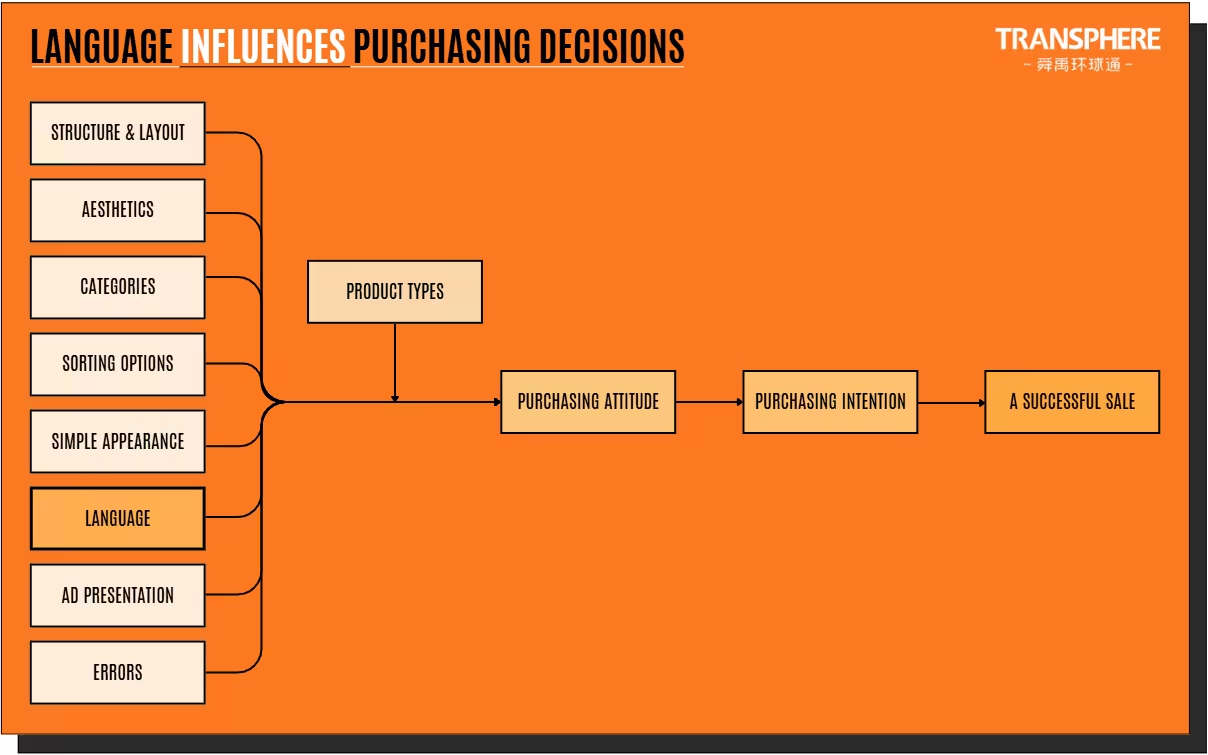
2. Higher customer retention
In today’s market, keeping your customers is just as important, if not more, than acquiring new ones. That’s especially true as customer acquisition costs have surged 222% over the last eight years. It’s not just about the costs of acquisition:
- You’re 14 times more likely to sell to an existing customer than to convert a new one.
- And those loyal customers? They spend 31% more on average.
Localization plays a major role in driving that loyalty. Research by Nantel and Glaser found that proper localization directly impacts how usable a website feels to users. And when a site feels easier to use, customers are far more likely to return. But that usability isn’t just about language—it’s about cultural alignment.
Take Honka, a Finnish log home company, as an example. Their website doesn’t just change the language depending on the market. It adapts the design, imagery, and even product selection based on regional preferences.
As you can see below, the Japanese version follows a detailed, information-rich layout that resonates with Japanese consumers. On the other hand, the English version leans into a cleaner, more minimalist aesthetic.
Meanwhile, the Kazakh version showcases winter homes and other models tailored to the region’s climate and lifestyle. Every time a customer runs into content or design choices that feel out of place, it creates friction. Enough of that, and they’ll bounce to a competitor.
But when the experience feels familiar and intuitive, customers are far more likely to come back.
3. More market shares
The global cross-border e-commerce market is booming—valued at $4.3 trillion in 2025 and projected to hit $5.9 trillion by 2029, with a compound annual growth rate (CAGR) of 8%. That kind of growth signals enormous opportunity.
But it also signals competition.
According to Statista, 84% of e-commerce businesses say their market is either “tough” or “very tough” in terms of competition. In such a crowded space, small advantages don’t just help—they compound. And so do small missteps.
That’s where localization for ecommerce can give you a lasting edge. Dr. Donald A. DePalma, Chief Research Officer at CSA Research, puts it plainly:
The numbers support this. Paddle analyzed 457 companies and found a direct link between localization and growth:
- 8.14% growth for companies with no localization
- 11.32% with basic translation and currency conversion
- 16.42% when fully localizing for two markets (including local pricing)
- 18.22% for companies targeting three or more markets
That’s more than double the growth rate for companies investing in even moderate localization.
4. Greater online visibility
To grow your ecommerce presence, you need to be seen. And that starts by understanding where your customers begin their product search.
While Google holds nearly 90% of the global search engine market, product discovery now happens across many platforms. According to Jungle Scout:
- 56% of U.S. consumers start their search on Amazon
- 42% use traditional search engines
- Social platforms like TikTok are quickly gaining ground
But across all these platforms, one constant remains: language drives visibility. Whether someone searches on a search engine, a social media platform, or an ecommerce store, their language dictates the results they see.

In fact, according to Google, search results are influenced by both the language of the query and the user’s language preferences. Other platforms take a similar approach. In practice, this means localized content isn’t just easier to understand—it’s more likely to show up in the first place.
When someone searches for “cheap shoes” in French, they’re far more likely to see French-language results. If your site only offers English content, you’re invisible to that search—no matter how good your product is.
5. Sustained global demand
Global ecommerce localization can help international ecommerce platforms balance demand across the year. By tapping into region-specific shopping events, businesses can smooth out slow periods and create many revenue peaks.
- In China, the Lunar New Year (January/February) drives a staggering $140.2 billion in sales.
- In the Middle East, Ramadan shifts through the calendar but consistently brings a massive surge in activity. Online marketplaces saw a surge in transactions of 143% during Ramadan. As a whole, online transaction volumes grew 69% year over year during the festival period.
- In Mexico, El Buen Fin generated $8.6 billion in 2024, acting as a key national shopping event.
- And, of course, Singles’ Day in China (Nov 11) and Black Friday in the U.S. (which saw $10.8 billion in online sales in 2024) remain dominant forces.
This variety allows you to chain demand across regions. But to capitalize here, translating your homepage isn’t enough. You’ll need a thorough ecommerce localization strategy.
How to build your ecommerce localization strategy
Implementing a successful ecommerce localization strategy starts with two key questions:
- When is the right time to localize?
- Which markets should you prioritize?
Once answered, you can start addressing the technical and linguistic localization elements.
When should you start localizing?
Timing is critical. Localizing too late can mean missed revenue, and moving too early can stretch resources. Getting it right affects everything, from budget allocation to your position in the market.
There are two main paths here: reactive localization and proactive localization.
Reactive localization
This approach is triggered by clear signs of international demand. Some common signals include:
- High bounce rates from specific countries
- Cart abandonment during checkout because of currency or language friction
- More frequent support requests related to language or payment issues
- Consistent traffic coming from non-primary language regions
These signals point to demand that already exists and revenue likely being left on the table. In this case, localization is about removing friction from the buyer journey to unlock growth that’s already knocking.
Proactive localization
Proactive localization means entering new markets before demand becomes obvious. It’s riskier but can yield big results, especially since localized marketing performs 86% better on average.
Proactive localization is common among:
- Big brands with a solid home-market presence looking to scale
- Companies using market research to target regions with high e-commerce growth potential
- Businesses watching competitors gain traction in international markets and choosing not to wait
In reality, most businesses land somewhere in the middle. You start by responding to clear demand signals, then shift toward proactive moves as you build the systems and confidence to expand.
It’s not about choosing one over the other—it’s about knowing which approach fits your current growth stage.
How to pick the right market
Once you’ve decided to localize, the next step is deciding where to focus. While sometimes the decision makes itself, often, a clear framework is needed to help you move from gut instinct to data-driven decisions. Here’s how to approach it:
1. Assess market opportunity
Not all markets are created equal. Evaluate each one based on hard data and alignment with your product.
- Market size and growth: Look at total e-commerce volume and future growth rates. High-growth markets are attractive but don’t ignore smaller regions where your offering fills a clear gap.
- Digital maturity: Consider internet access, mobile adoption, and e-commerce readiness. Mature digital ecosystems often translate into faster ROI.
- Competitive landscape: Who’s already there? Are they localizing well? Look for gaps in service, underserved segments, or weak localization you can improve on.
- Purchasing power: Understand what consumers can afford and what they’re used to paying. This helps shape realistic pricing and positioning.
2. Gauge implementation feasibility
Beyond opportunity, assess how hard and expensive it will be to localize for each market.
- Linguistic and technical complexity: Does the language need RTL layouts (like Arabic or Hebrew)? Will character sets or text expansion impact your UX?
- Localization costs: Some languages are more resource-intensive than others. Consider translation rates, volume of content, and quality requirements.
- User experience adaptation: How much of your site will need to change? Navigation, visuals, and even the checkout flow may need tailoring.
- Ongoing maintenance: Localization isn’t a one-and-done project. Factor in the time and cost to update content regularly—products, promotions, blogs, and support materials.
3. Align with strategic resources
Make sure your ambitions match your capacity.
- Cost-benefit analysis: Estimate your total investment (initial + ongoing) and weigh it against potential revenue, market share, and strategic gains.
- Phased rollout Strategy: Start with high-impact, manageable markets. You don’t need to localize everything on day one—begin with core pages, bestsellers, or key campaigns.
- Resource mapping: Define your internal team, external support (agencies, freelancers), tech stack (TMS, CMS), and budget needed for each market.
- Risk assessment: Consider economic, political, or regulatory challenges in each region. Don’t overlook currency risks or unstable conditions that could impact your strategy.
The ecommerce localization process explained
The ecommerce translation and localization process is not uniform. Different businesses need different approaches depending on content volume, speed, and brand voice.
Large marketplaces (e.g., Amazon or AliExpress) rely heavily on machine translation post-editing (MTPE) to handle massive volumes of user-generated content quickly and cost-effectively.
Meanwhile, smaller sites often deal with more curated content. Think of a brand site. They deal with their own product descriptions, marketing copy, and support articles.
These lean more on human translation to maintain tone and quality. Still, scalable processes are essential with the high content volume typical of e-commerce.
MTPE at scale: Efficient high-volume ecommerce translations
A solid machine translation setup requires careful upfront planning—configuring the tech stack, defining quality standards, and managing resources. Once in place, the workflow generally follows six key steps:
Step 1: Preparation and pre-translation
Content flows into the translation management system (TMS)—often automatically via API.
- The TMS checks translation memory (TM) to see if a perfect or partial match already exists.
- 100% matches might be used as-is or go straight to the quality assurance (QA) stage.
- Fuzzy matches pre-fill the content for review and editing.
- If there’s no match, the content is sent to the machine translation stage.
Step 2: Machine translation for ecommerce
The content is passed through one or more MT engines—often customized for the business’s domain. Nowadays, generative models like Claude may be outperform traditional MTs. A such, they are becoming a viable alternative.
Regardless of the engine, glossary terms may be automatically applied to keep terminology consistent. The result: fast, usable translations that can be sent to a reviewer.
Step 3: Post-editing (PE)
The raw MT output goes to a human post-editor in the TMS. Editors review and correct for clarity, tone, and accuracy—guided by the glossary and style guide. The level of editing depends on the goal:
- Light PE: Fix major errors and leave minor style issues.
- Full PE: Aim for high fluency and natural flow.
Step 4: QA
Once post-edited, the content moves through automated QA checks and, sometimes, human review.
- Checks include formatting, tag handling, number/date formats, and glossary use.
- Some workflows include linguistic QA (LQA), which involves a separate linguist reviewing the content for tone, accuracy, and consistency.
- In-context reviews may also be done in a staging environment to catch layout or UI issues.
Step 5: Engineering and integration
Now, it’s time to push the translated content live. Engineering handles integration into your CMS or e-commerce platform, ensuring no issues (layouts adapt for text expansion, RTL languages display correctly, etc.).
Step 6: Continuous improvement
Post-editing and QA outputs feedback into your system:
- The TM is updated to improve future leverage.
- Data from QA, LQA, user feedback, and performance is used to:
- Refine MTs/LLMs
- Update glossaries and style guides
- Adjust post-editor instructions
This creates a loop that improves quality and efficiency over time—essential when you’re operating at scale.
Specialized workflows for high-impact content: TEP and Transcreation
While MTPE is ideal for quickly handling volume, it’s not always suitable. High-stakes, brand-critical content needs a different level of care, one that prioritizes tone, nuance, and precision. For this type of content, more human-centric workflows come into play:
1. Translation, editing, proofreading (TEP)
The TEP workflow is the gold standard for quality. It’s used for content where accuracy, clarity, and brand voice must be airtight. Content like:
- User interface elements
- Legal or compliance documentation
- Core help and support articles
- High-visibility marketing campaigns
- Foundational brand messaging
Here’s how the process breaks down:
- Translation: A professional linguist translates the content.
- Editing: A second linguist reviews for accuracy, grammar, tone, and cultural relevance.
- Proofreading: A final check for typos, formatting issues, and consistency before publishing.
- Quality control (QC): More checks against style guides, glossaries, and functional requirements.
Who’s involved: A full team of translators, editors, proofreaders, project managers, and sometimes subject matter experts (SMEs). Their only focus is to ensure the highest level of accuracy and polish.
-
Advertising slogans
-
Creative campaigns
-
Emotion-driven branding content
-
Any messaging where cultural nuance is key
The technical elements of ecommerce localization
In ecommerce localization, the technical side can make or break your platform. Overlooking it creates friction that slows you down in new markets. Get it right, and you’ll not only reach more people, you’ll turn that reach into revenue. In this section, we’ll break down the key technical areas that matter most:
- Domain structure
- Currency and unit conversions
- Regional pricing
- Local payment methods
- Multilingual customer support.
It’s the foundation that makes your localization strategy actually work—and scale.
Choosing your domain strategy
One of the most important elements of your global ecommerce localization strategy is the domain structure you will choose.
It affects how users perceive your brand, how easily they can find you, and how effectively you can grow in a new market. There are three main approaches, each with its own pros and cons:
- New market-specific brand and domain
Some companies build entirely new brands for specific markets. For example, Pinduoduo’s launch of Temu, or Walmart operating as Walmex in Mexico. This route makes sense when:
- Your original brand has little recognition in the new market
- You want to tailor the brand identity to local culture or expectations
- Market conditions call for a more localized presence
It’s a bold approach, often used for deeper, long-term plays in unfamiliar or highly distinct markets.
- Local domain with the same brand (ccTLDs like .de, .cn)
This strategy keeps your brand name but adopts a country-specific domain. That’s Amazon’s strategy (amazon.de, amazon.fr, etc.). This option has many advantages:
- It helps build trust: ccTLDs (country code top-level domains) signal local relevance and commitment.
- It’s SEO-friendly: search engines often prioritize local domains for regional queries, especially in ecommerce.
- It improves conversion potential: Research shows local TLDs increase purchase intent. While .com domains are trusted globally (70% implicit trust), almost50% of consumers prefer local domains when shopping online.
The trade-off? You split your domain authority across different sites, which may need more effort to build SEO value in each market.
“I firmly believe users read URLs in the search engine results and that it has a direct impact on how many of them click on links. Say you’re looking for a ‘second hand car’ and you live in Germany. If you know nothing else about a website, which is most likely to be the most compelling: ‘secondhandcar.com‘ or ‘secondhandcar.de‘? To me, it is clearly the latter.”
— Andy Atkins-Krüger, WebCertain Founder
- Global domain with subfolders or subdomains (website.com/de or de.website.com)
This option keeps everything under your main .com domain but separates content by language or region:
- Subfolders (e.g., website.com/de)
- Subdomains (e.g., de.website.com)
It maintains brand consistency and the authority of your main domain. It makes it easier to manage, and you don’t have to invest as many resources starting from a new domain.
But it may not perform as well locally compared to ccTLDs in markets where language and culture play a bigger role in trust and visibility.

Unit conversions: Currencies, sizes, and the hidden friction
Unlocalized units—especially currencies—create unnecessary friction that stops shoppers in their tracks.
Currency localization matters more than you think
Consider the final stages of the customer journey: you’re ready to check out, but the price is listed in a foreign currency. Just like in the image below. Do you proceed, or hesitate?
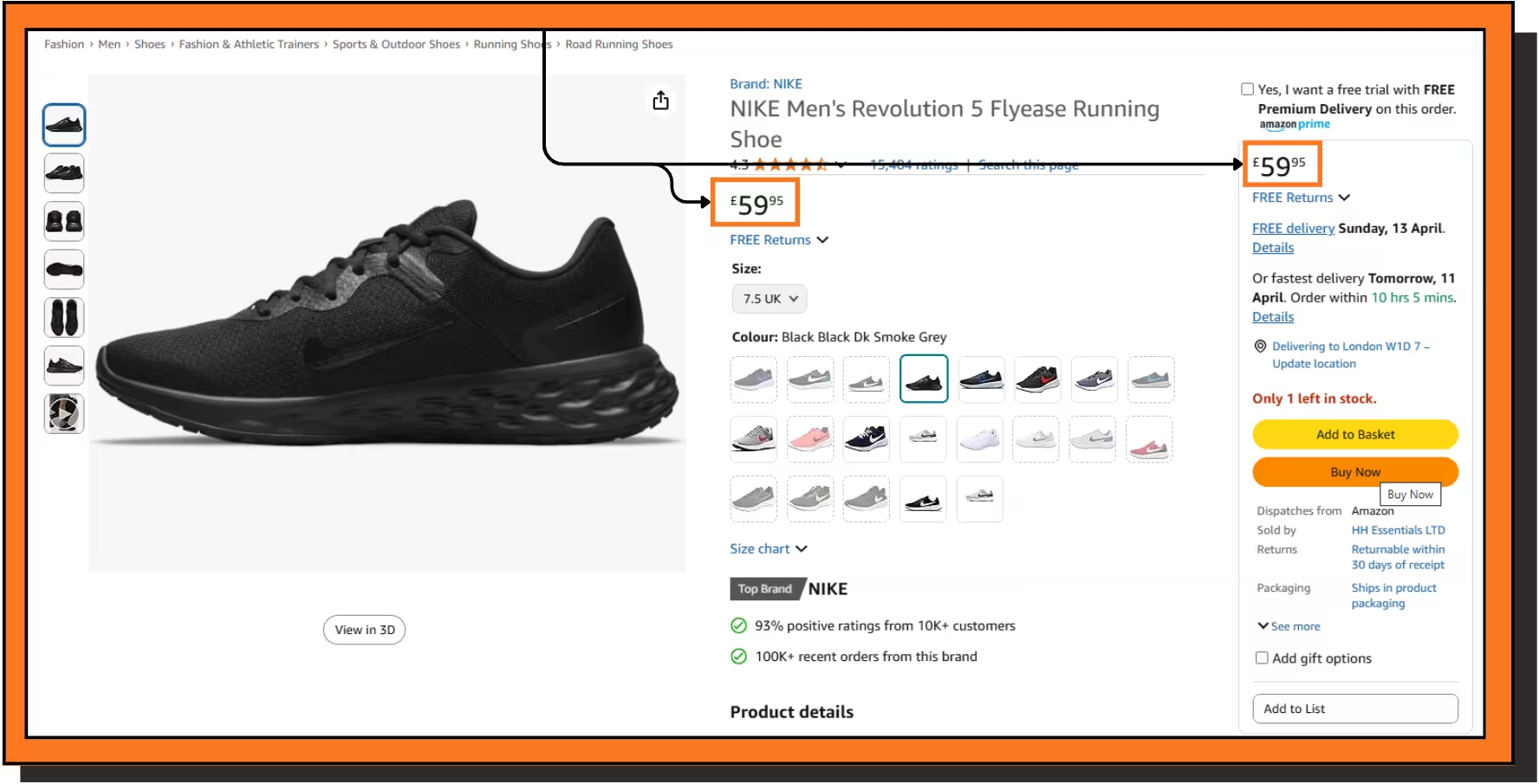
That’s exactly the situation international customers face when your store doesn’t localize currency.
- According to CheckoutChamp, 33% of shoppers abandon carts when shown USD-only pricing.
- 92% prefer to pay in their local currency.
- Shopify reports that showing local currencies can boost conversions by up to 40%.
It’s not (just) a convenience issue. Customers often face bank fees and unfavorable conversion rates, turning what looks like a good deal into a pricey gamble.
Measurements: One size doesn't fit all
Currency isn’t the only unit that needs attention. Unconverted sizes, weights, and formats create confusion, especially in categories like clothing, electronics, home goods, and cosmetics. Consider the images below. Would you be able to pick the size for yourself?
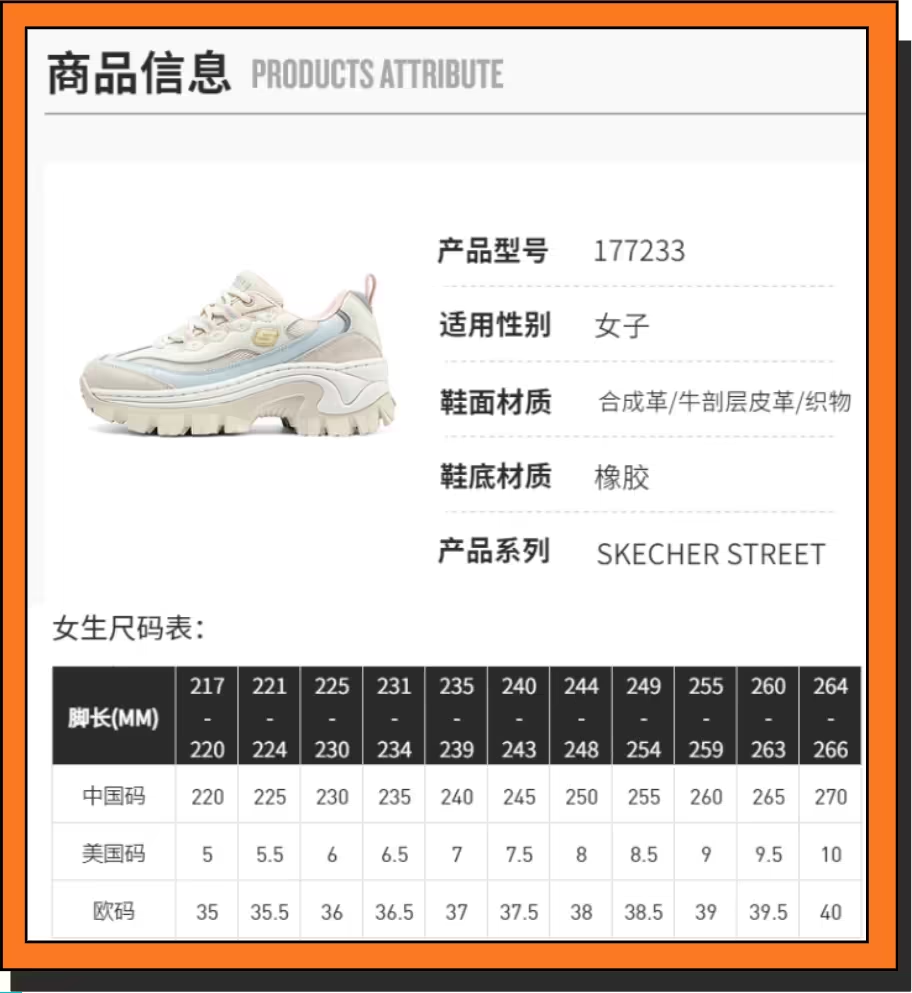
No? Neither would I. And even if you could figure it out with some degree of confidence, odds are you wouldn’t risk it. That’s why localizing units is important. Common pain points include:
- Clothing sizes (e.g., a U.S. XL doesn’t match an Asian XL)
- Shoe sizing systems (EU, US, UK, CN — all different)
- Weight and volume (pounds vs. kilograms, ounces vs. grams)
- Length and dimensions (inches vs. centimeters)
- Temperature (Fahrenheit vs. Celsius)
- Date formats (MM/DD/YYYY vs. DD/MM/YYYY)
- Time zones and delivery windows
Each mismatch creates uncertainty. And uncertainty kills conversions.
Design and UX localization
Design isn’t just about aesthetics but trust, familiarity, and relevance. In fact, 56% of users click on product images before doing anything else on a product page. That alone makes visual localization a high-impact opportunity.
Product photography: Visual languages for global audiences
High-quality photos play a critical role in buying decisions. 93% of consumers say product appearance is the top factor influencing their purchase.
When localizing product imagery, consider both technical execution and cultural relevance:
- Context matters: Show products being used the way local customers would use them.
- Representation matters: Feature models that reflect the local population. It boosts relatability and increases purchase intent.
- Style matters: Adjust visual context to match local norms. Whether that’s clothing appropriate to the climate or imagery tied to cultural values and aesthetics. Consider the Honka example again.
Even small visual cues (like background settings or color choices) can signal authenticity and help your brand feel native.
Localized visual marketing materials
Marketing content should feel like it was made for the audience, not just “translated” for them.
- Local partnerships pay off: 75% of consumers say they trust local influencers more than celebrities. Collaborating with regional content creators can bring authenticity and drive engagement—sometimes boosting traffic by 30%.
- Tailored campaigns: Use market-specific visuals for holidays, events, and promotions. Align your imagery with what people are actually celebrating and seeing around them.
- Cultural sensitivity: Avoid missteps by understanding what’s acceptable and what’s not in each market.
Remember, the goal is to adapt visuals without losing your core brand identity. Start by localizing:
- Your homepage
- Top-selling product pages
- High-traffic promotional banners
Then, use performance data (bounce rates, conversions, visual feedback) to guide future changes. Keep your creative flexible but your brand recognizable.
Price localization: Aligning pricing to local expectations
Price localization goes far beyond simple currency conversion. It’s about understanding what your customers can actually afford. After all, consumers in different regions have different incomes, cost expectations, and sensitivities. Ignoring these differences means leaving revenue on the table.
Why it matters
As discussed earlier, companies that put in place regional pricing see growth rates nearly double those that don’t (16–18% vs. 8%). That’s not a coincidence.
When prices reflect what local consumers can comfortably pay, conversion rates improve, and market share grows faster. Here are a few real-world examples:
- Spotify adjusts its subscription fees by market, charging $4.50 in Argentina vs. nearly $17 in the UK.
- Xsolla, a payment processor, added pricing in Brazilian Real (BRL) and saw a 30% sales increase in Brazil.
And the research corroborates the real-world cases:
- In the APAC region, localizing payment experiences reduced cart abandonment by 32%.
- Across Europe, 11% of consumers abandon purchases if they can’t pay in their local currency.
This isn’t just about convenience. It’s about removing pricing friction that disrupts the buyer journey at the most critical point—checkout.
How to do it right
Effective price localization requires more than running numbers through a currency converter. You’ll need:
- Market research to understand local pricing expectations and spending behavior
- Competitor analysis to benchmark smartly within each region
- Localized pricing tiers that reflect purchasing power while still protecting your margins
- Performance tracking to test, refine, and adjust over time
Localized pricing isn’t just fair—it’s strategic. When done right, it aligns your value proposition with what your customers actually experience day to day.
Support local payment methods
When it comes to checkout, offering only international credit cards isn’t enough. If your customers can’t pay the way they’re used to, they’ll walk away—no matter how great your product or price is.
Today’s global shoppers overwhelmingly prefer familiar, local payment methods. And the data backs it up.
Why local payment options matter
A Payvision survey revealed the following preferences across Europe:
- 42% of consumers prefer digital wallets
- 35% opt for Visa or Mastercard
But dive deeper, and regional differences become clear:
- Netherlands: iDEAL is used by 83% of shoppers
- Germany: Amazon Pay holds the largest chunk of the digital wallet market (21%)
- Belgium: Bancontact is the preferred method for 53%
- Spain: PayPal dominates with 50% market share
The trend is global:
- In Brazil, Pix leads with 44% of transactions, surpassing credit cards at 41%
- In China, Alipay and WeChat Pay are ubiquitous, used by over 80% of consumers
Failing to support these regional preferences can create friction right at the finish line.
Multilingual customer support
Providing support in your customers’ native languages is essential to building loyalty and driving growth. It’s not just our opinion:
- 70% of consumers prefer brands that offer native-language support
- 62% say they’re more forgiving of product issues if they can speak to support in their own language
- 58% are willing to wait longer for that support—if it’s in their native language
Even among customers who speak English fluently, 60% still prefer support in their own language. It’s not just about understanding; it’s about feeling understood.
The absence of this kind of support comes at a cost. Around 29% of businesses have lost customers due to not offering multilingual services. That’s nearly a third of companies losing loyalty over something entirely avoidable.
And the upside? It’s just as clear. 75% of consumers are more likely to repurchase from a brand that offers support in their language.
When done right, multilingual support improves the customer experience and has been directly linked to higher sales, stronger retention, and greater profitability. It shows your international customers that you’re not just selling to them—you’re invested in serving them.
